
Welcome to our two-part Jimi Hendrix guitar lesson special. We've looked at Jimi's lead approaches in detail and now we're focussing on Jimi Hendrix's sometimes overlooked rhythm playing. There's lots to learn here and we're breaking things down into two overall sections; clean rhythm and funk-rock.
Let's get started!
1. Jimi's clean rhythm style
Get to grips with the basics of Jimi’s ‘thumb over the neck’ and one-finger barre techniques and soon you’ll be playing classic tracks such as ‘Hey Joe’, ‘Bold As Love’ and more.
Thumb over the neck barre chords
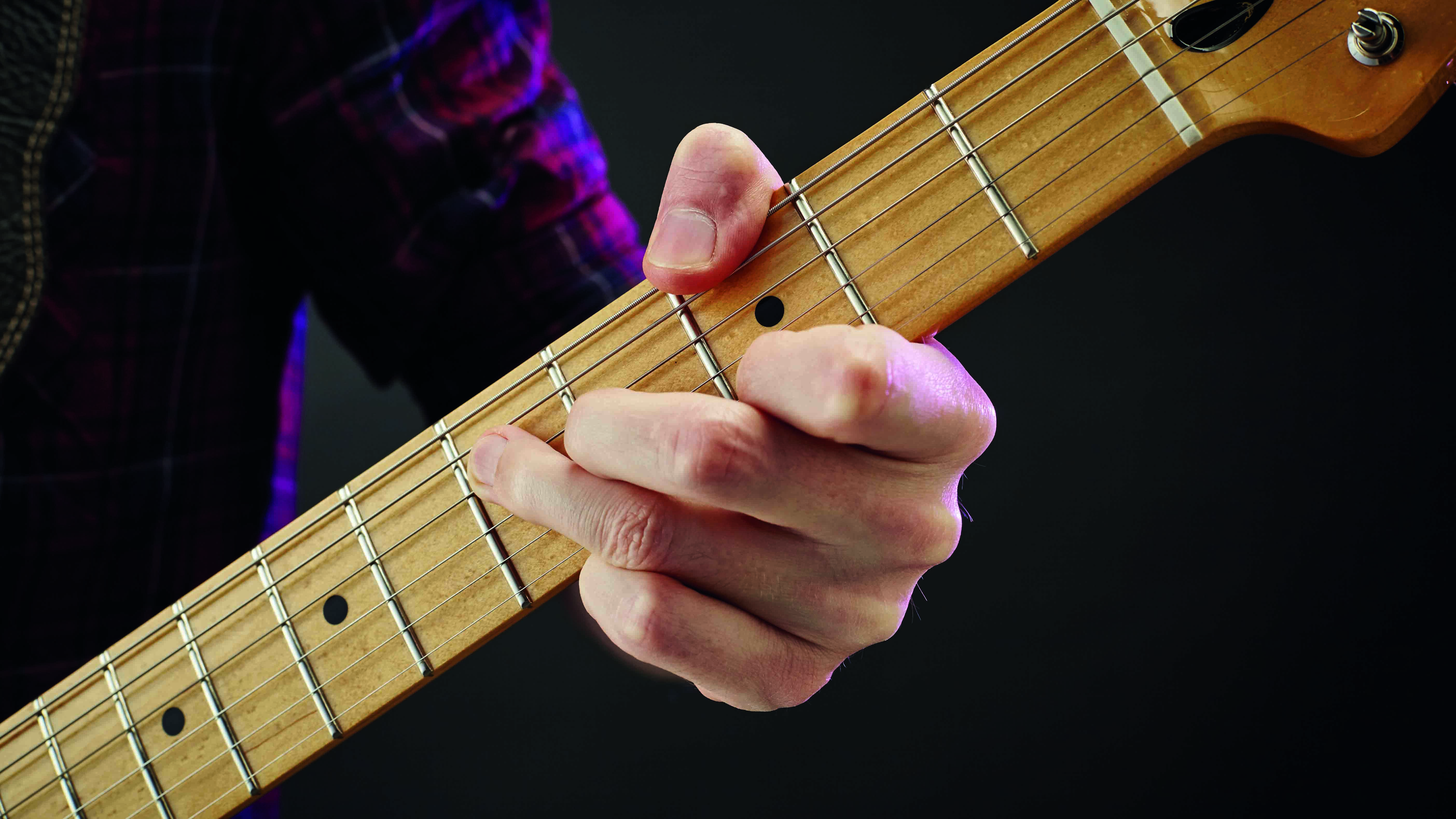
Classical guitarists may balk, but Jimi’s ‘thumb over the neck’ barre chord technique allows him to position his fret hand in a way that those magical chord embellishments fall neatly under his fingers. It’s just a matter of wrapping your thumb round the neck to fret the sixth string instead of using your first finger to barre across all six strings.
Try the basic G chord first, and hammer on to the extra notes for a Little Wing or Castles Made Of Sand vibe.
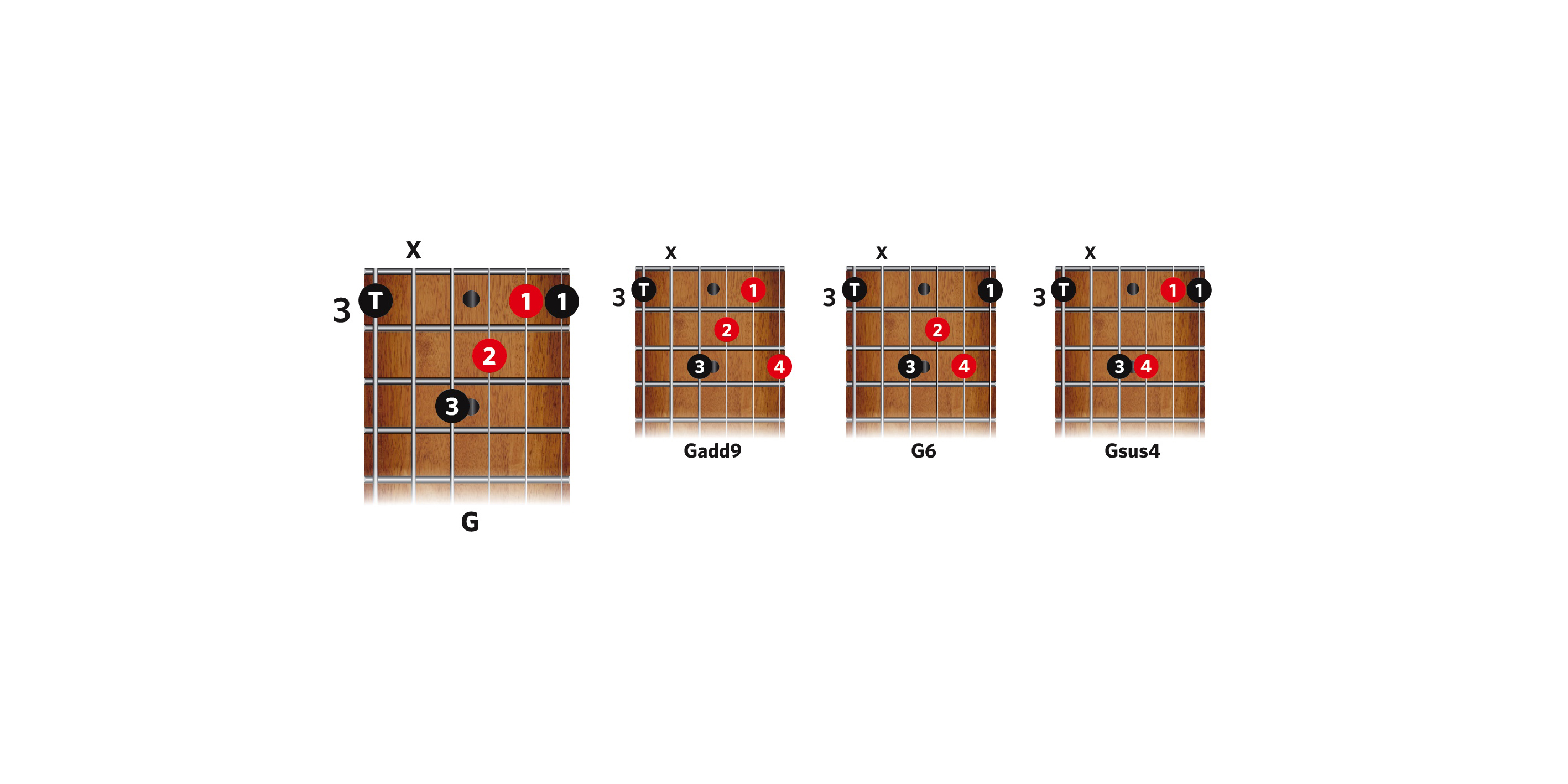
First finger barre chord shape
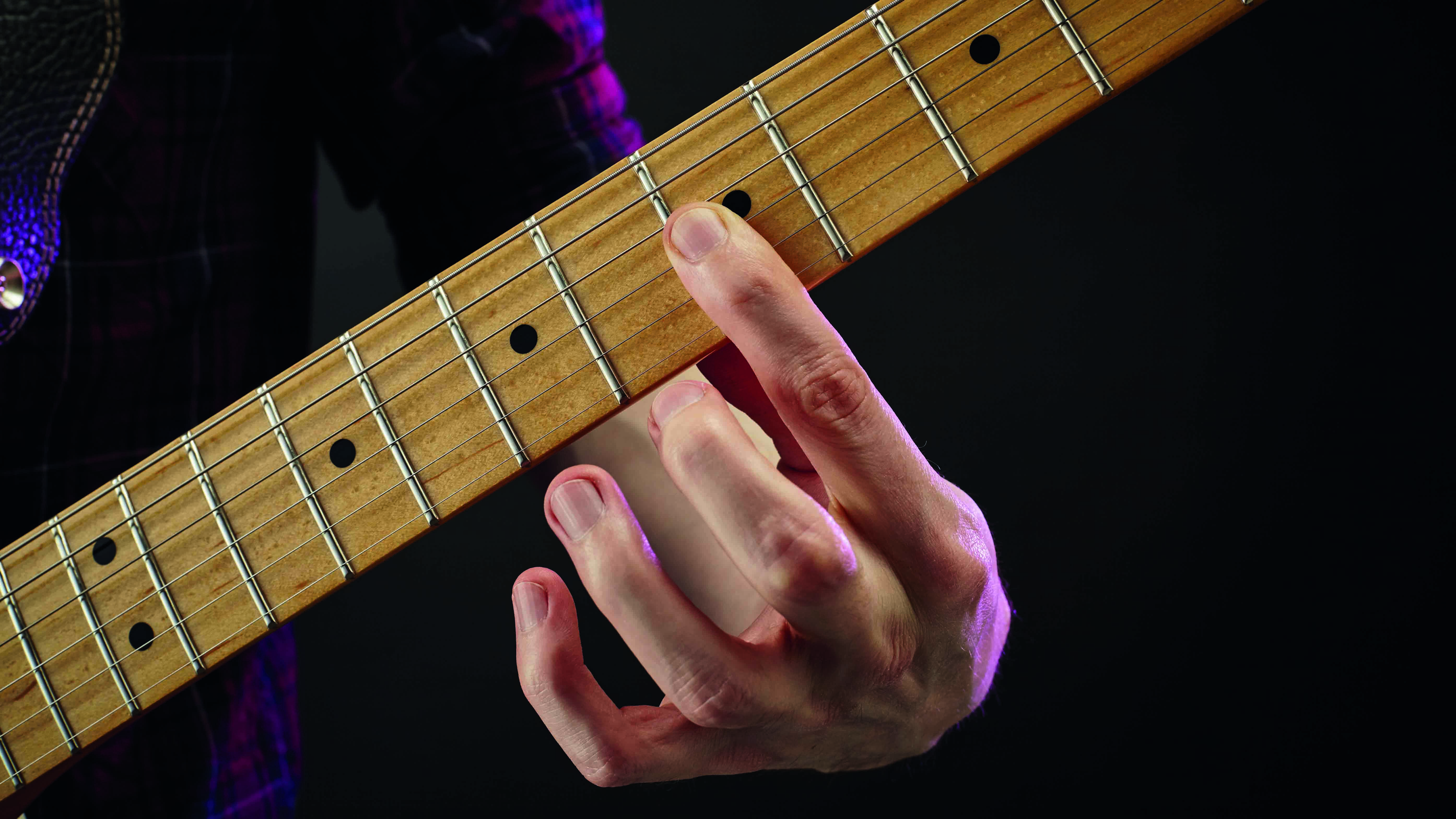
This first-finger barre across three strings is a key part of Jimi’s rhythm style. You simply cannot play like Hendrix without this essential shape. We’ve only scratched the surface with a few third-finger variations here but experiment with your second and fourth fingers, too.
Start with the one-finger barre and hammer on to the additional notes in C/E, Am and Cadd9/G for authentic sounds in the style of Wait Until Tomorrow, Bold As Love and many more.
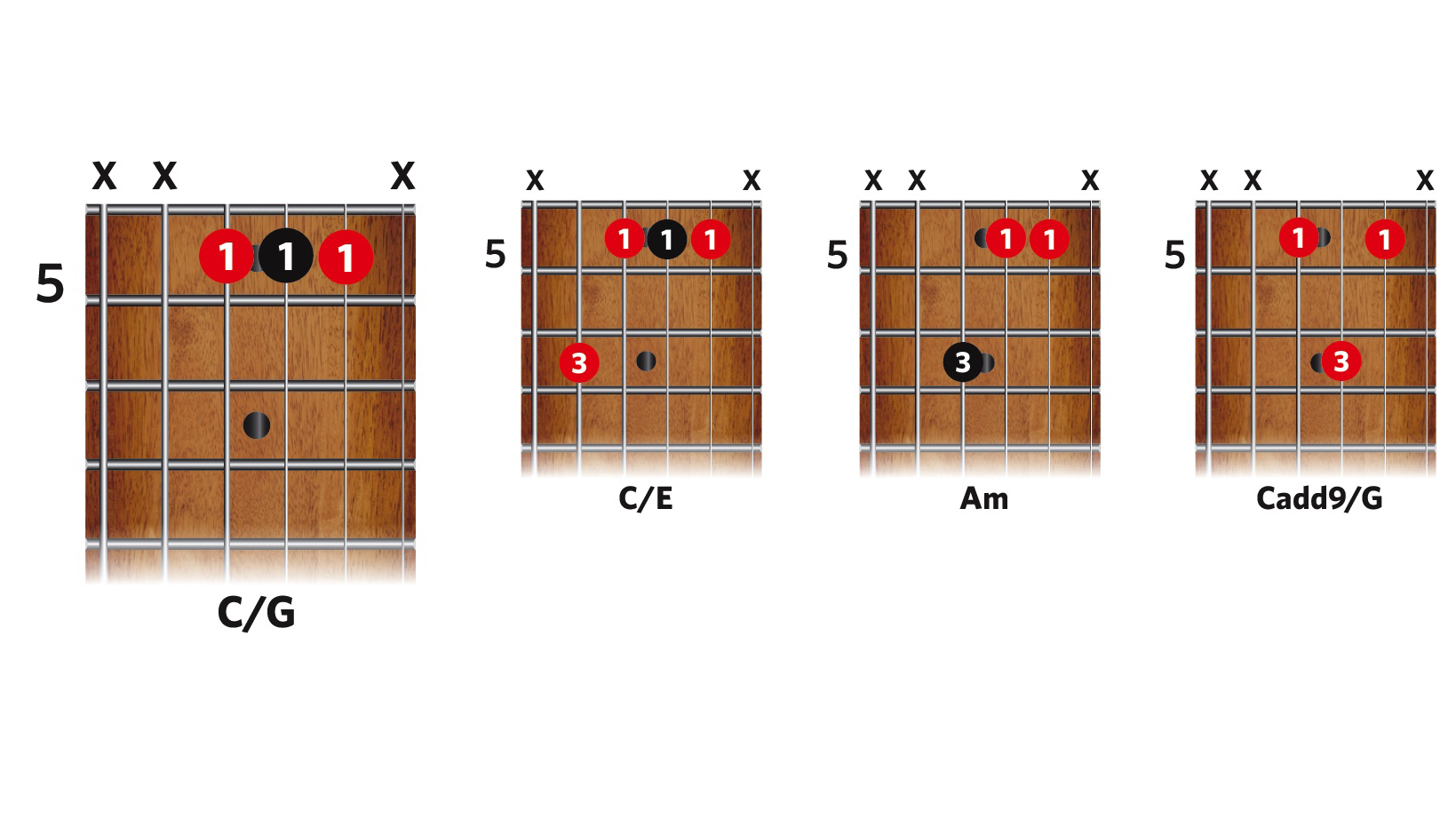
Minor chord shapes
The ‘thumb over the neck’ and one-finger barre techniques also apply to minor chords. Remember, Jimi would often play only two or three notes from each shape – an idea that allows you to ditch the occasional note you can’t easily reach and focus on cleanly fretting the more colourful extensions.
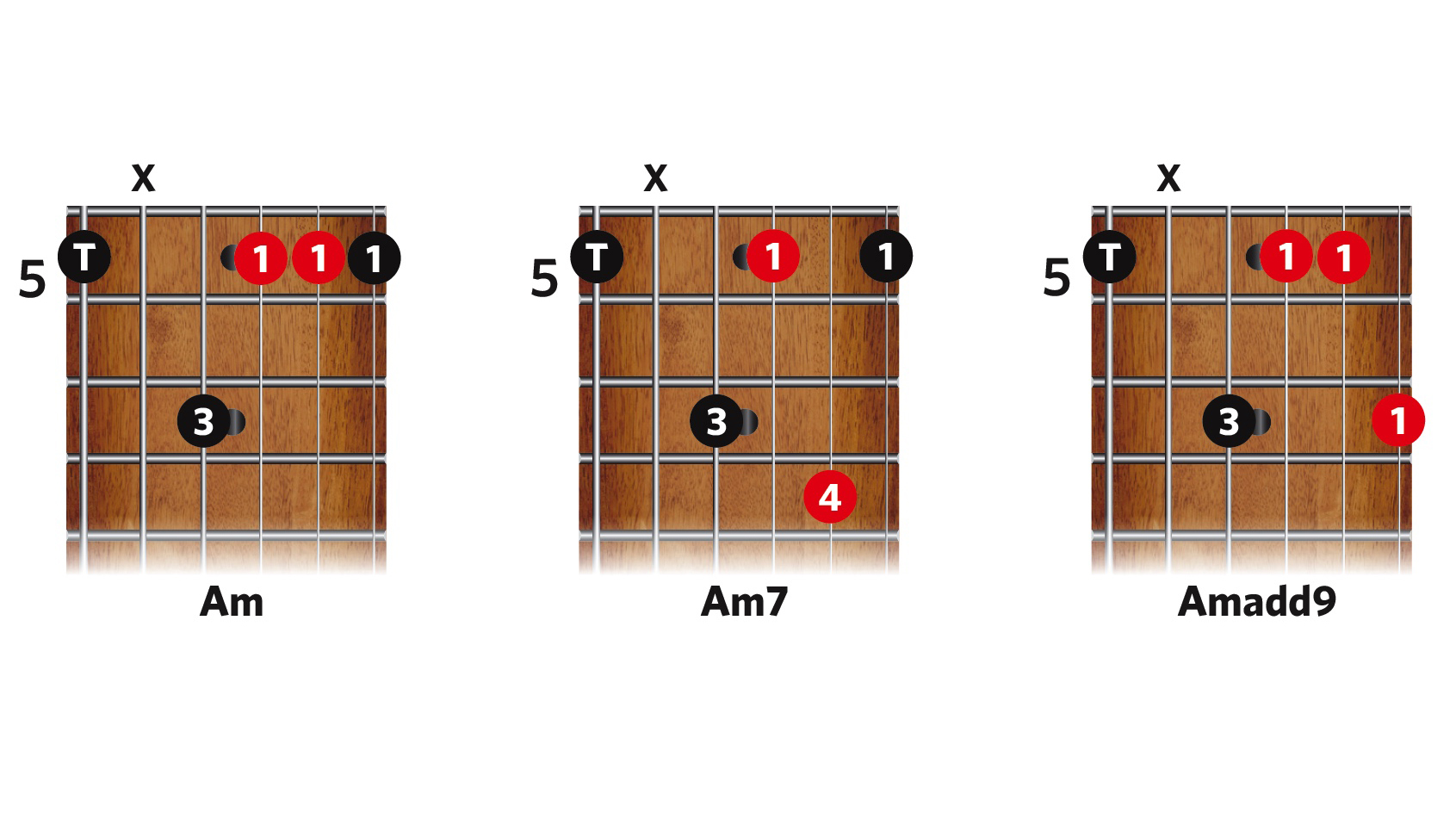
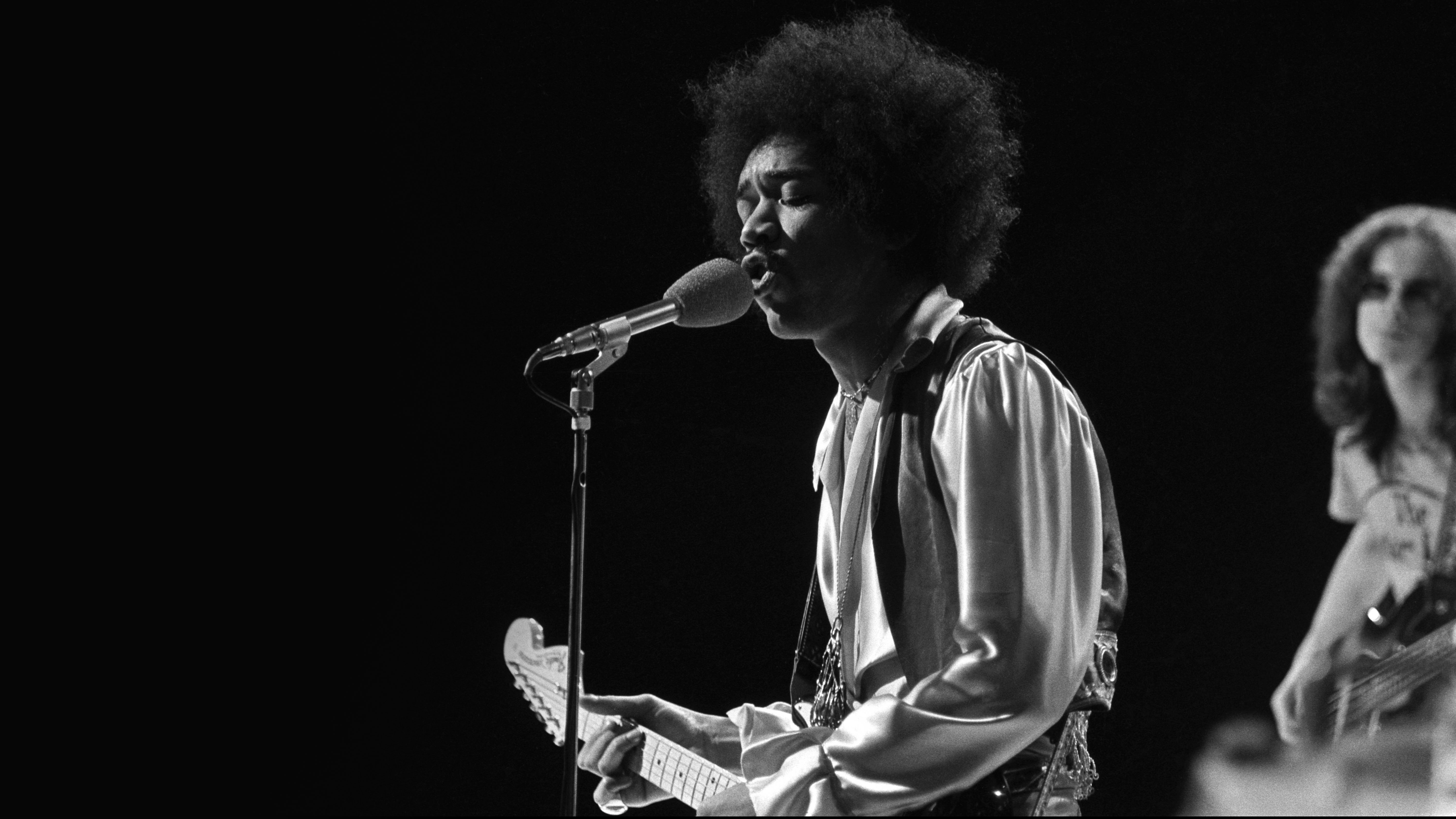
Instant Hendrix chord progression
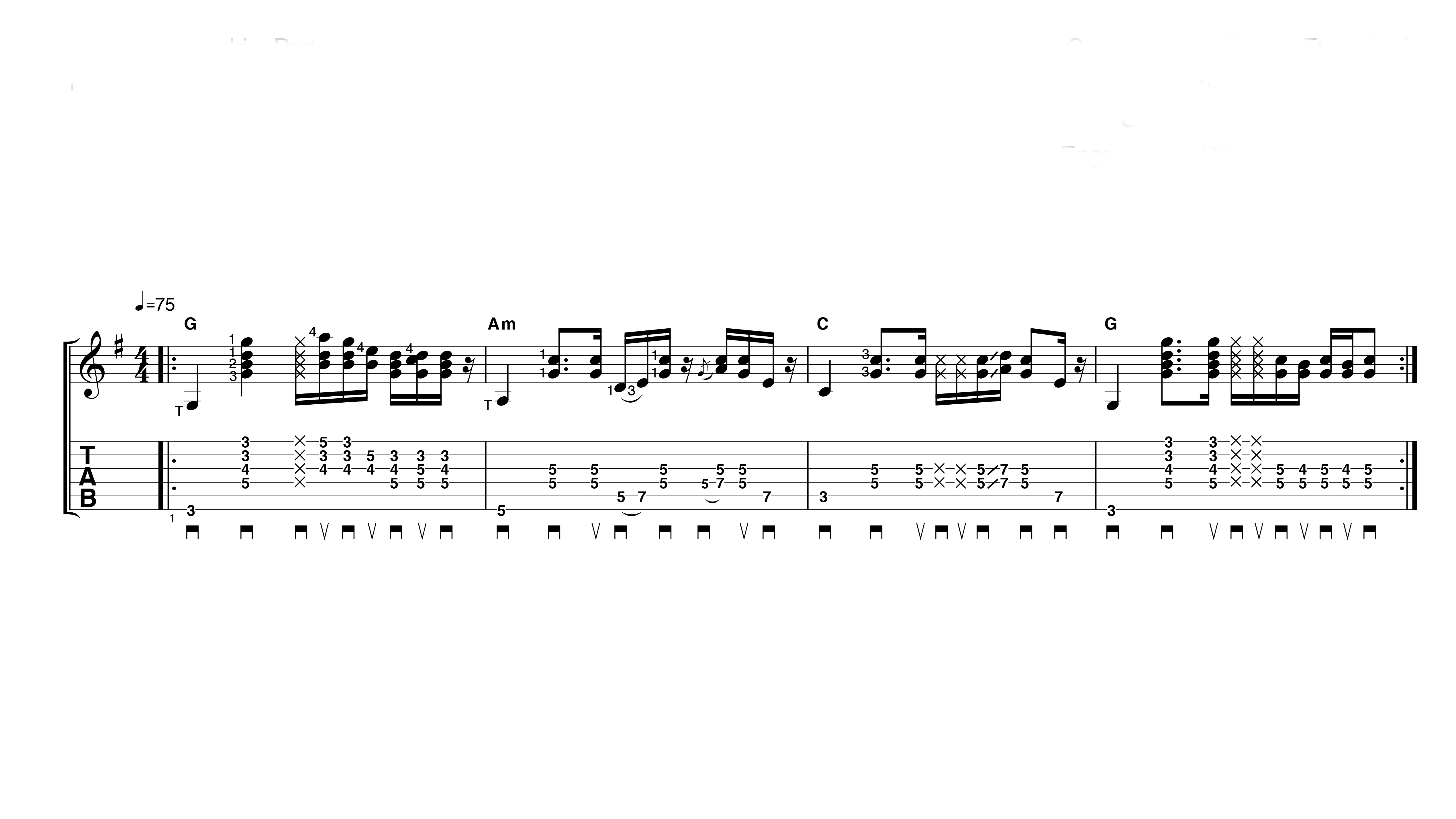
You might think there’s nothing overly Hendrix-like in a G-Am-C-G sequence, but Jimi’s rhythm work turns this basic progression into quite the signature line. The first two chords in our example above, G (G-B-D) and Am (A-C-E), don’t share any notes but in bar 1 we’ve added A, E then C embellishments.
It’s a trick on the ear that hints at both chords – and Jimi did this all the time. In bars 2 and 3 we’re implying both Am and C chords throughout – you can even play these bars in the ‘wrong’ order. The bass guitar pins it all down with root notes to keep you on track.
Jimi's passing bass notes
You’ve learnt our G-Am-C-G progression, now it’s time to try another of Jimi’s methods of navigating a chord sequence, this time with passing bass notes, Hey Joe or Manic Depression style.
Black dots are G root notes, the red dots are from the G major pentatonic scale (G A B D E), and the green dots are ‘chromatic’ notes from outside the key signature. Simply strum one of the chords from the progression then experiment with the single notes to ‘walk’ melodically to the next chord.
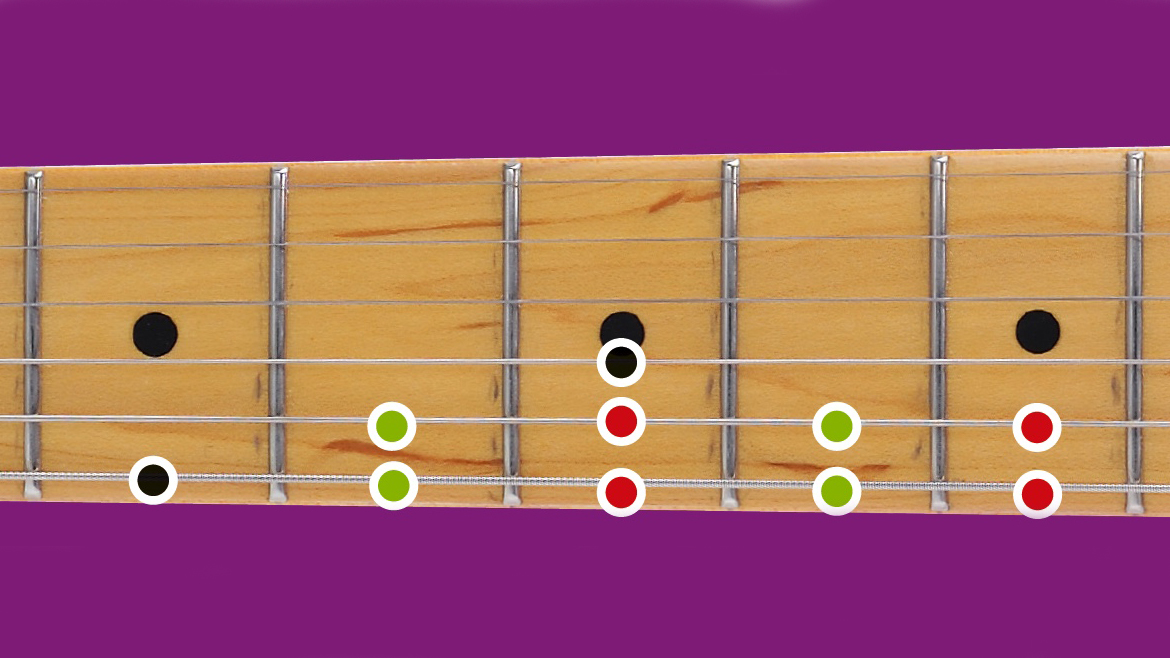
2. Jimi's funk-rock chords
He’s arguably best known for his fiery, psychedelic lead guitar style but Jimi played with so much groove, too. Let's look at the more aggressively rhythmic side of the founding father of funk-rock.
Start by get your fingers round these hard, edgy sounding chords and you’ll be part way to nailing Jimi’s aggressive funk-rock stylings. The 7#9 is the great man’s best known signature chord and can be heard in Purple Haze, Foxey Lady, Crosstown Traffic and more.
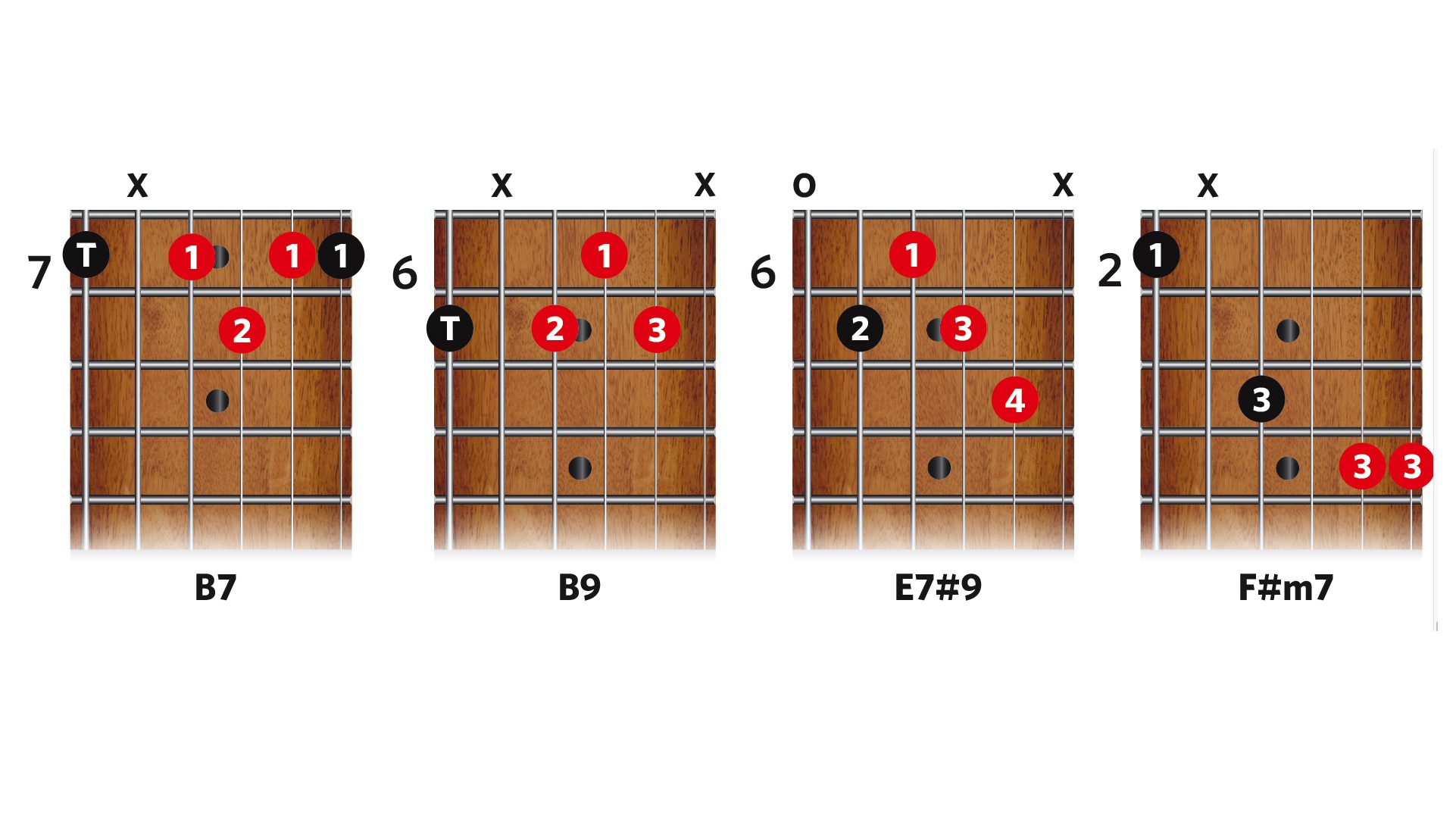
Playing loose and tight
Jimi could play tight or loose and this riff is an example of both methods, mixing up a Foxey Lady-style groove with the more strummy chords of songs like Can You See Me. Maintain a steady 16th note picking motion, relax into the C#7 barre chord and stay tighter on the F#7.
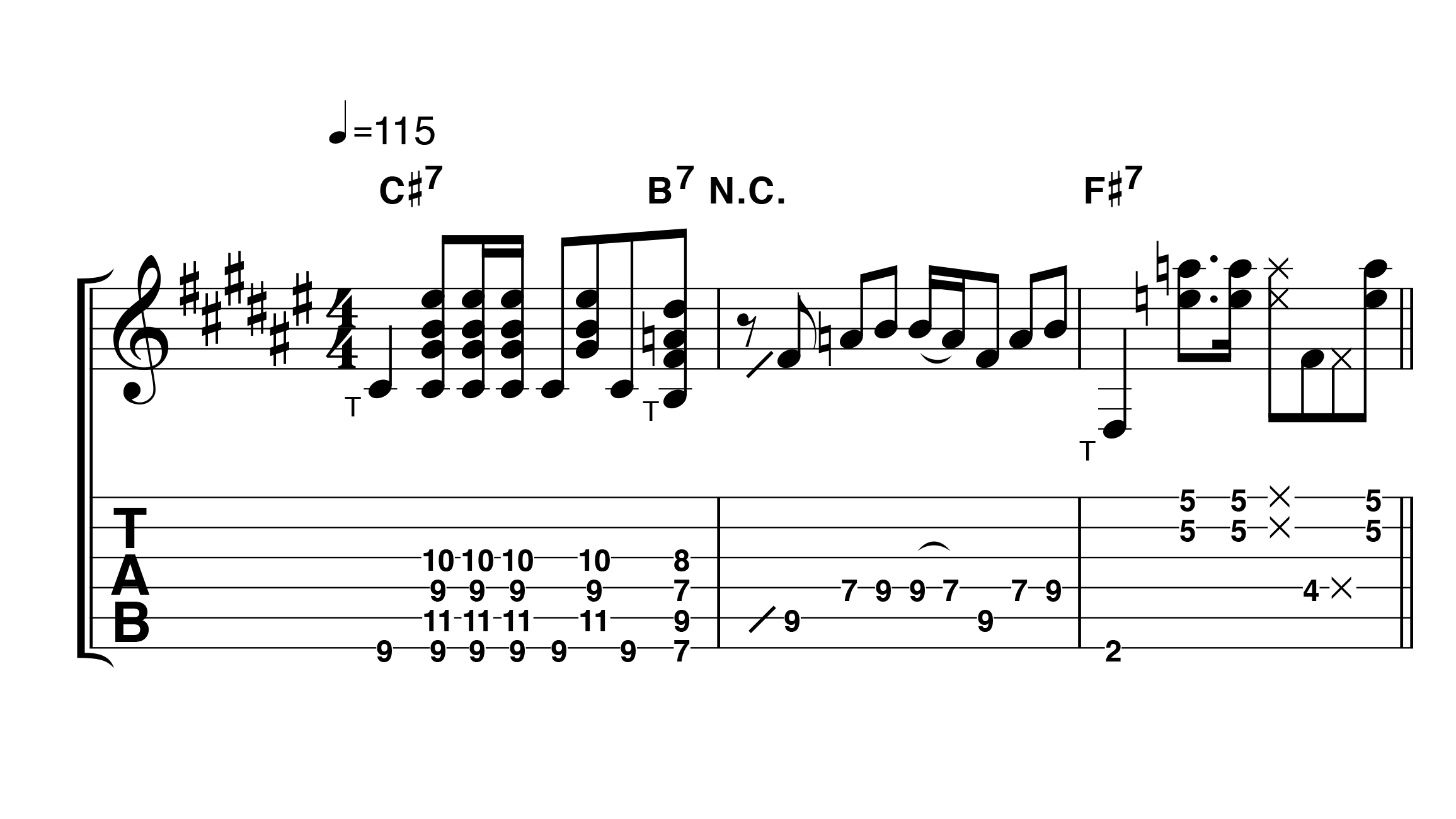
Single-note rhythm riffs
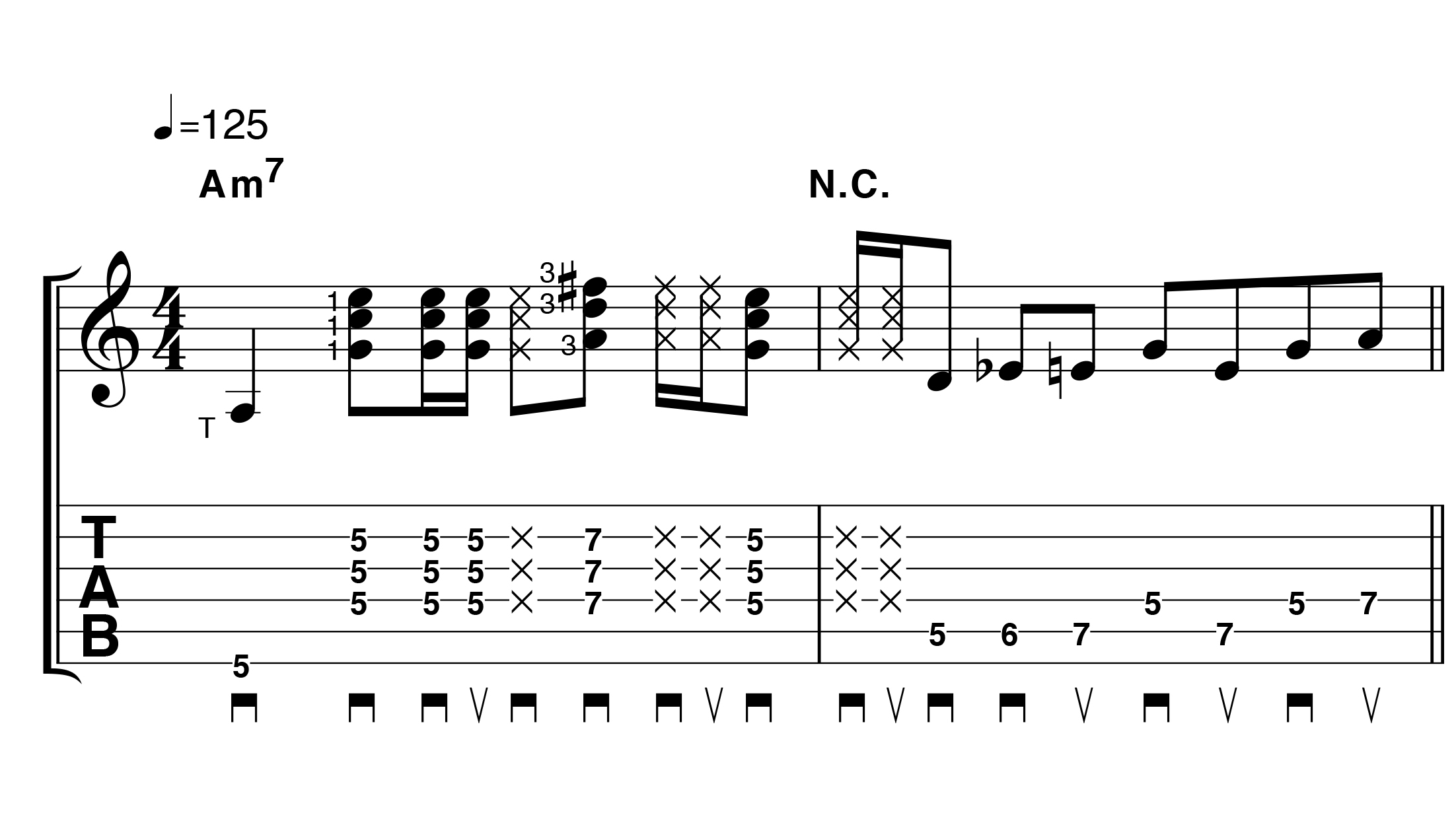
Some of Jimi’s funkiest material was played with Band Of Gypsys. With a mixture of partial chords, fret-hand mutes and single-note pentatonic lines, this tab example will help you master the vibe of tracks such as We Gotta Live Together.







